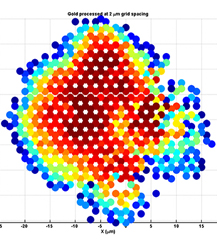 Experimentalists from all over the world visit Argonne each year to use the ultra-bright X-ray photon beams produced here to peer inside materials. Research teams with beamline reservations, or ‘beamtime,’ are expected to set up, calibrate the detector, and man their experiments round-the-clock for days at a stretch. Any problem with the experimental setup is revealed only during the analysis phase, often rendering the entire dataset useless. Even a seemingly minor thing like a bad cable can cause terabytes of useless data. That’s a problem.
Experimentalists from all over the world visit Argonne each year to use the ultra-bright X-ray photon beams produced here to peer inside materials. Research teams with beamline reservations, or ‘beamtime,’ are expected to set up, calibrate the detector, and man their experiments round-the-clock for days at a stretch. Any problem with the experimental setup is revealed only during the analysis phase, often rendering the entire dataset useless. Even a seemingly minor thing like a bad cable can cause terabytes of useless data. That’s a problem.
A recent collaborative effort involving high-performance computing is giving beamline users the ability to conduct fast ‘in-beam’ analysis of their initial data so that they can find and correct problems early on. Here’s a recent story about how computational methods and infrastructure at Argonne are boosting beamline performance and accelerating discoveries in materials science.